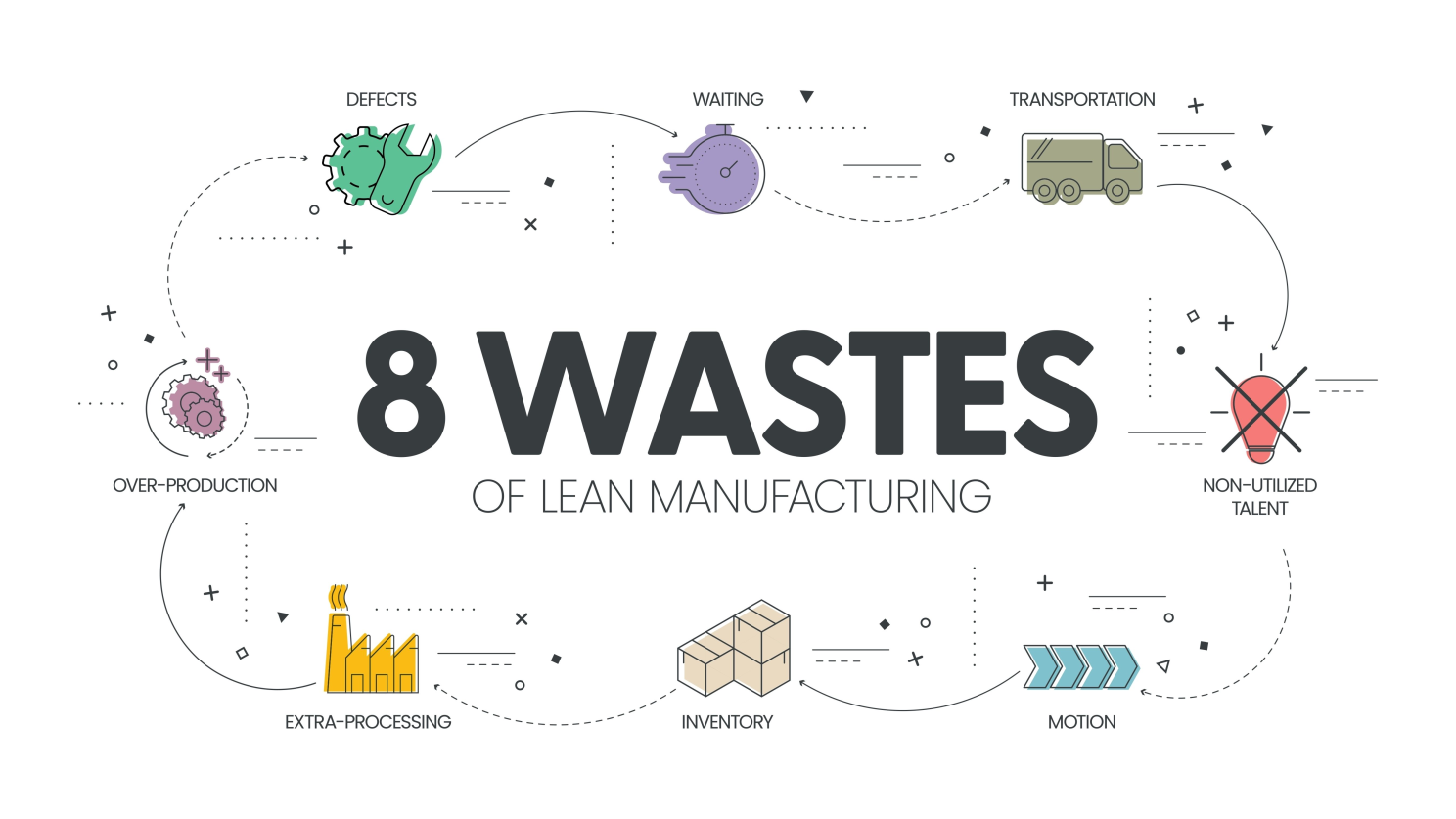Hello again! Welcome back to Connected Concrete, my newsletter about optimizing performance in the plant.
Today we address the third source of waste identified in Lean Manufacturing principles, non-utilized talent. This is a timely topic considering the impact of the current labor shortage on plant operations.
[If you are interested in learning how the precast industry is already responding, check out Caitlyn Knezevic’s post, How Precast is Addressing the Labor Shortage. It outlines what we learned and includes snippets of interviews with Stubbe's Precast, Northern Design Precast Inc, and Shea Concrete Products.]
"A mind is a terrible thing to waste."
- 1972 iconic motto of UNCF (formerly United Negro College Fund)
There’s gold in them there (people)!

8 Sources of waste according to Lean Manufacturing principles
Lean principles call for companies to purposefully elicit non-utilized talent as a matter of course. This is based on a simple premise:
Non-utilized talent is a waste of opportunity that could be.
Imagine you are running a gold mining operation. You discover that there are veins of gold on your property that exist under very difficult terrain outside of where you are currently excavating. Would you continue with business as usual or would you stop your current digging and figure out how to excavate in the difficult terrain where you know the resource exists?
Of course you go where the gold is.
Just as the miner needs to reassess how he will tap the veins of gold in difficult terrain, organizations need to reassess and figure out how to tap into the hidden talents of current employees. Especially in these times of a tight labor market.
Now, I can hear some of you thinking: "Easy for you to say. People these days don't seem to have much talent."
Understood. But everybody has some potential that is unrealized; some more, some less. In the long view, creating a culture of professional growth will attract people who are on the "more" side. So, go for the gold.
We are actually wired to want to grow our capabilities
In his LinkedIn essay, The Secrets of Activating "The Seeking System" to Increase Employees' Learning and Engagement, author Ahmad Salah writes that the Ventral Striatum section of the brain creates an emotional tendency called the Seeking System. This is one of seven main emotional tendencies and is responsible for our innate desire to explore, learn and develop.
He identified three triggers of the Seeking System that can be applied in the workplace:
- Prompt curiosity through experimentation
- Emphasize unique strength and perspective
- Experience impacts beyond the money
Let’s look into each of these:
1) Prompt curiosity through experimentation
Companies practicing Lean principles actively encourage their employees to develop new ideas for operating more effectively and efficiently. They understand and accept that there is always some "error" in "trial and error." So, foster an environment that rewards employees for thinking out of the box, offering suggestions for improvement and trying out new solutions. This will extract non-utilized talent that might otherwise lay dormant in a system that discourages personal risk-taking.
It is critically important that the organization resists old habits of a rigid heirarchy and an environment that induces a fear of failure. This activates the Fear System in the brain, which produces a nervous state of hyper-vigilance that squelches Seeking System activity.
The Lean Six Sigma Institute advises organizations to have all employees become certified at the most basic levels to educate them about Lean and Six Sigma principles and get everyone thinking about ways to continuously improve. This sends a powerful message about the company's commitment to Lean practices and, more importantly, it gives people confidence to engage.
This new-found confidence is evident in the testimony of people who attended CONNSTEP's Continuous Improvement Certification Program offered to companies domiciled in Connecticut. (Thanks to my good friend, Jim Jamra, for sharing this with me.)
2) Emphasize unique strengths and perspective
Fifty years ago we had "company men" who placed the doctrines and needs of the company ahead of their own. This is not the case today.
Technology has empowered individuals more than ever before:
- Dissatisfied with a customer experience? Take to Twitter and the company is quickly brought into damage control mode.
- Think it should be easier to get from here to there? Start Uber and disrupt the taxi industry.
Never in the history of mankind has the individual held so much power.
Successful companies learn how to "surf this wave" rather than swim against it. Those that do will attract and retain people who value the respect they receive. And, these people will happily grow as professionals in their employment there.
Finally, embrace diversity. People from different backgrounds contribute different ideas. One thing is clear today: New ideas win. Companies with employees contributing diverse ideas are more likely to come up with winners as a result.
3) Experience impacts beyond the money
Pay is important, yes. But job satisfaction requires a lot more. Generally, people want to know that they are contributing to something that is bigger than themselves.
By engaging employees in practices that draw on their insights and experience for company improvement, you can provide this opportunity.
This is partly why so many people are attracted to start-ups where they are asked to take less money to "build a dream." Yes, they are often provided upside opportunity with stock options but they understand that there is a great risk that they will never get the big upside. What they know they will receive immediately is the satisfaction of building a company while they work in it. Offer this to your employees.
The Idencia View
It’s our view that a company should serve as a vehicle for uplifting all stakeholders: customers, employees, vendors, shareholders and the community in which it works. (This is actually our stated purpose at Idencia.)
The traditional model places shareholders first and all other stakeholders right behind. In my view, returns will flow to shareholders in greater abundance if you reverse the process:
- Create great value for customers and offer it at a reasonable price;
- Provide employees a good culture and opportunities for professional growth;
- Respect your vendors and treat them well; and
- Treat all of your stakeholders as members of a valued community.
Providing great value for customers is the reason why we are diving so deeply into plant optimization strategies and Lean practices. We want to offer Idencia as a solution, including software and knowledgeable people.
In the process of this, we are learning ourselves and want to share what we learn with our community. Would you help by completing this 2-minute survey about the sources of waste in your plant?
If you have any thoughts or comments about this edition, please start a dialog in the comments section. Thank you!
Next up, Motion as a source of waste
Next week I will discuss motion as a source of waste. Have you ever studied how motion-efficient you are (or are not) in managing your work? It is an eye-opener!
Until then, let’s remember that UNCF got it right 50 years ago. A mind is a terrible thing to waste. And wasting talent is a waste of the mind.
Thanks again for reading and see you next week.
Jeff
This blog is part of a LinkedIn Newsletter series by Jeff Pollock, CEO of Idencia. To get the latest of what he’s writing, be sure to subscribe to his newsletter Connected Concrete.

Feb 27, 2024 11:45:00 AM



Comments